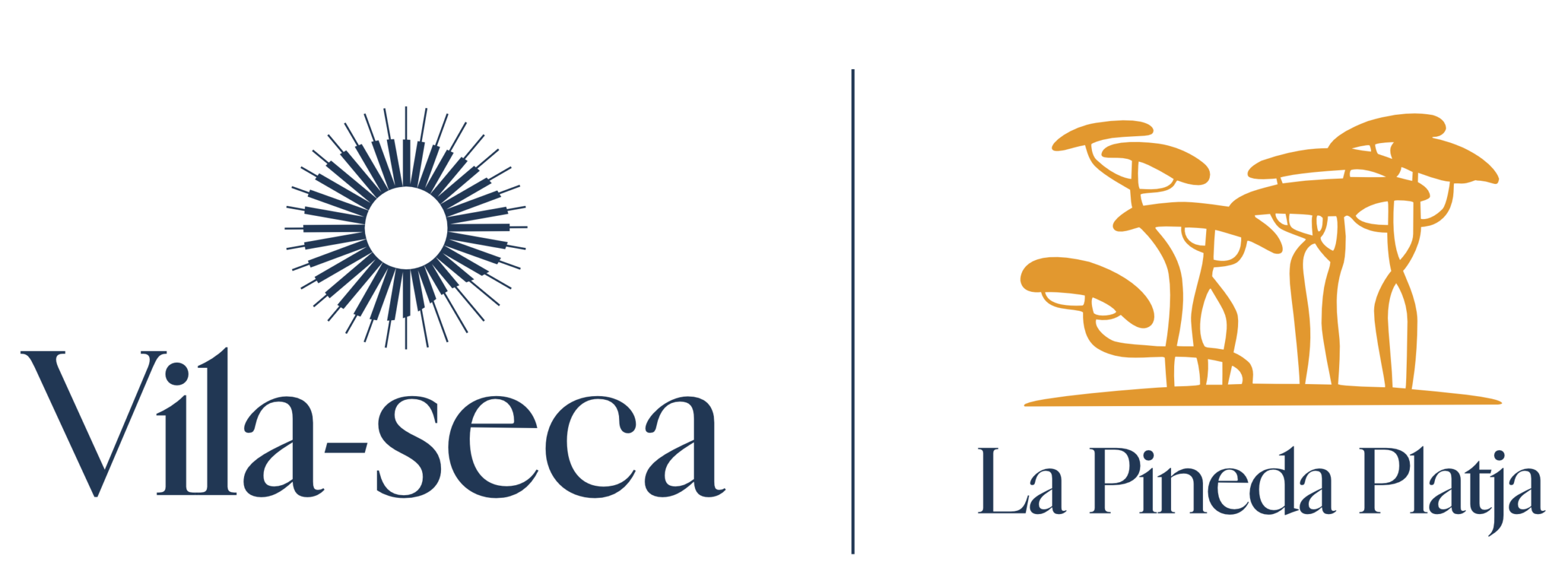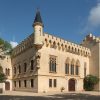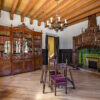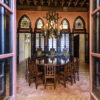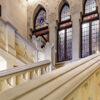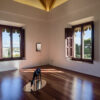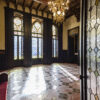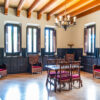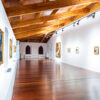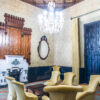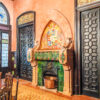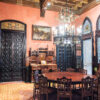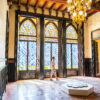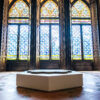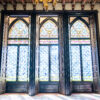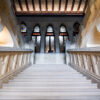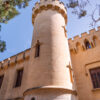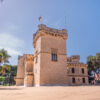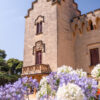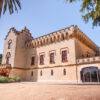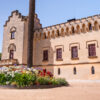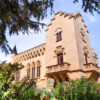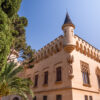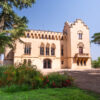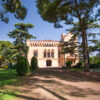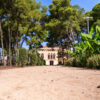The Vila-seca Castle is one of the municipality’s most interesting landmarks. Declared a Cultural Asset of National Interest, the castle is located to the north of the town, quite near to the Celler de Vila-seca (Winery), and its svelte silhouette protrudes from the surrounding lush pine groves.
The structure has undergone a handful of modifications over the course of the years, due to changes in owners, giving the building a neo-mediaeval appearance. The base is rectangular with a ground floor and two storeys above. It has generous windows on the ‘noble floor’ (the mezzanine floor, with higher ceilings), along with balconies that extend from the angular tower. Torre dels Olzina (Olzina’s Tower)—which some historians claim may be from the Roman period—is the oldest construction of the present-day castle (twelfth century). This tower with its quadrangular base has an inside perimeter of 5.10 x 4.25m and its outer walls, constructed with large ashlars—or finely cut and dressed stones—are nearly two metres thick.
Vila-seca Town Council acquired the Castell dels Comtes de Sicart in 2005 and renovated it in different phases. The Castell is now an exhibition space for contemporary art, as a result of a collaboration agreement between the Fundació Vila Casas and the Ajuntament de Vila-seca.
The castle is one of the features included on the route to get to know the historic centre via the heritage monuments with a QR code.
From 15 June to 15 September (Summer opening hours)
- Open: Tuesday to Sunday and bank holidays: 10 am to 2 pm and 6 pm to 9 pm.
- Guided tours: Wednesdays and Saturdays at 6 p.m. (Spanish) and at 7:30 p.m. (Catalan)
Sundays at 11 a.m. (Spanish) and at 12:30 p.m. (Catalan) - Mondays closed.
Bank holidays open: 24 June, 3 and 15 August, 11 September.
From 16 September to 14 June (Winter opening hours)
- Open: Tuesday to Sunday and bank holidays: 10 am – 2 pm / Saturdays 10 am to 2 pm and 5 pm to 8 pm.
- Guided tours: Saturdays at 12 pm (Spanish) and Sundays at 12 pm (Catalan).
- Mondays closed.
Bank holidays open: 17 January, 28 and 29 March, 1 April, 1 May, 12 October, 1 November, 6 and 8 December.
A bit of history
The Vila-seca Castle dates back to the period of the Christian repopulation of Camp de Tarragona. Between 1162 and 1168, coinciding with the Christian colonisation of the area, the Torre dels Olzina (Olzina’s Tower) was the defence tower for the lordly holdings of the Olzina family. The walled fortress was the source of protection for people, animals and food from the looters and pillagers so rampant in that day. During this period, the castle was owned by the Olzina family, having been awarded to Knight Ramon d’Olzina by the lords of Camp de Tarragona. At that time, Vila-seca dels Olzina was little more than a motley settlement of a few houses surrounding the castle.
Between 1437 and 1525, the manor of Vila-seca dels Olzina was the jurisdiction of the Saportella family and it would be in 1525 when Tadeu de Saportella would sell the castle and its lands to Archbishop Pere de Cardona, who was then lord of the neighbouring Vila-seca el Comú. The archbishop’s purchase of the castle led to the unification of the two Vila-secas and the new territory was named Vila-seca dels Olzina.
That is when the lords left their draughty and rather uncomfortable fortress that had been home to their predecessors, in order to build a decidedly more luxurious and comfortable residence, indeed practically a palace, converting the castle for all intents and purposes into a stately home.
Archbishop Pere de Cardona resold the castle around 1680 to Joan Kies Helmont, the Dutch consul to Barcelona, who was one of the developers of the ‘aiguardent’ (grape-based spirit) factories in Camp de Tarragona.
The successors of Joan Kies owned the castle until 31 December 1899, the day on which the castle and its lands were bought by nobleman Isidre Sicart i Torrents, Count of Sicart, who would completely transform the house working with architect Enric Fatjó i Torras.

